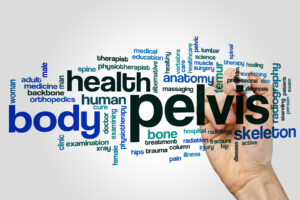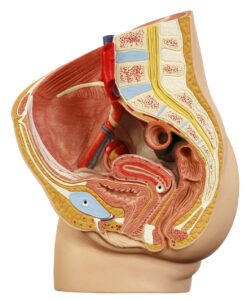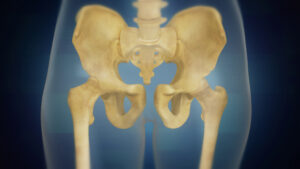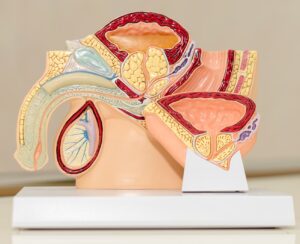Pelvic Pain 
Pelvic pain is more than just frequent or constant pain around your abdomen, tailbone, hips, and pelvis, that impacts men and women. Pelvic pain can limit your participation in relationships, work, child care, and your own self-care.



Causes:
- Muscle weakness in the pelvic floor and pelvis
- Nerve pressure
- Joint/muscle changes from pregnancy & childbirth
- Bowel and bladder changes
- Scar tissue from surgery
- Disease (inc. – cancer, ovarian cysts, inflammatory bowel, kidney stones, endometriosis)
- Trauma
Signs & Symptoms:
- Decreased mobility with your low back or hips
- Urgency, incontinence, and/or pain with urination
- Constipation and/or pain with bowel movements
- Reduced sitting tolerance
- Numbness or pain in your pelvic area with movement
- Pain with sexual activity
- Balance issues
- Testicular pain
An evaluation with your doctor is a critical first step to determine the cause of your pain. Pelvic physical therapy can help address pain and disfunction related to weakness in your pelvic floor muscles. The longer you wait to seek help the longer the treatments can take to reverse your discomfort. The treatment focuses on the muscles, ligaments, and connective tissue that support the rectum, bladder, prostate, reproductive tract, uterus, and sexual function. There are physical therapists that specialize in this pelvic health typically and should have either: The Certificate of Achievement in Pelvic Physical Therapy (CAPP), or The Women’s Health Clinical Specialist (WCS).
Pelvic physical therapy treatments include:
- Education to reduce strain & improve strength in your abdominal area when moving.
- Stretching of pelvic floor muscles
- Vaginal manipulation and massage (myofascial release)
- Pelvic floor muscle exercises
- Biofeedback & therapeutic electric stimulation to improve awareness of how your pelvic muscles work
Joint mobilization and trigger point therapy
